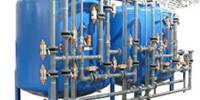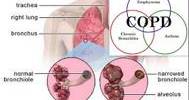Sick Building Syndrome (SBS) is a phrase used to describe a condition in which building occupants experience acute health and comfort impacts that appear to be related to their stay in the building, but no specific ailment or cause can be established. It is a condition in which people get illness symptoms or become infected with a chronic disease as a result of their work or living environment.
Symptoms
Symptoms of SBS may include headaches, eye discomfort, nose or throat irritation, dry cough, dry or itchy skin, dizziness, nausea, exhaustion, and difficulty concentrating.
The primary defining feature is an increase in complaints about symptoms such as headache, eye, nose, and throat irritation, fatigue, dizziness, and nausea. The 1989 Oxford English Dictionary defines SBS in this way. In 1984, when SBS was only ascribed to non-organic causes, the World Health Organization published a 484-page tome on indoor air quality, implying that the book may serve as the basis for legislation or lawsuit.
Causes
The causes of Sick Building Syndrome are often multifactorial and can include inadequate ventilation, indoor air pollution from sources such as volatile organic compounds (VOCs) emitted from building materials or furnishings, biological contaminants like mold, dust mites, or bacteria, inadequate temperature or humidity control, poor lighting, and high levels of noise. Psychological factors such as stress and dissatisfaction with the work environment can also contribute to SBS symptoms.
The outbreaks may or may not be a direct result of inadequate cleaning or inappropriate cleaning methods. SBS has also been used to describe staff concerns in post-war buildings with misplanned building aerodynamics, defects in the construction materials or assembly process and-or inadequate maintenance.
Treatment
Certain symptoms tend to worsen as people spend more time in the building; however, they generally improve with time or even disappear when they leave. SBS is frequently used interchangeably with “building-related symptoms,” which focuses the term of the disorder on the patients’ symptoms rather than a “sick” building.
Addressing Sick facility Syndrome often entails identifying and reducing the particular variables that contribute to poor indoor air quality and discomfort in the facility. This could include upgrading ventilation systems, reducing interior pollutants, maintaining ideal temperature and humidity levels, and eliminating any sources of moisture or mold growth. Furthermore, ensuring appropriate indoor environmental quality through correct building design, maintenance, and cleaning procedures can assist to prevent SBS symptoms from developing.
















